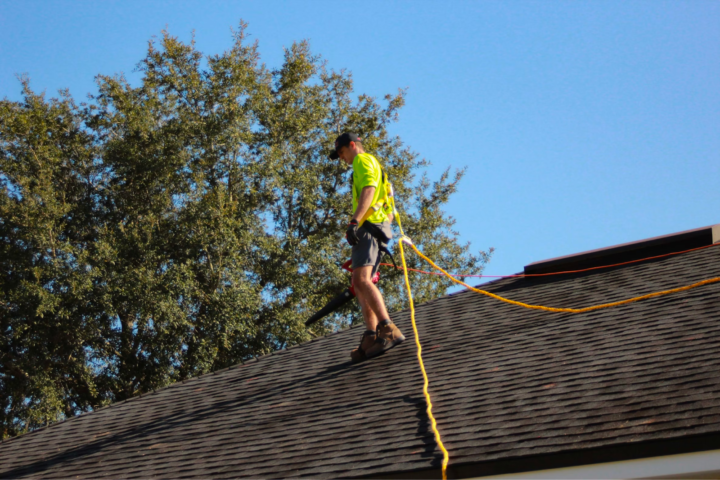Essential Tips for Keeping Your Roof in Good Condition
Your home is more than just four walls; it’s a sanctuary that shelters you from the elements, providing comfort and security. At the heart of this protection is your roof, a silent guardian that bears the brunt of rain, snow, blistering heat, and everything in between.
Given its crucial role, it’s only fitting to invest time and effort in maintaining this vital component of your dwelling. This guide is designed to be your go-to resource for understanding and implementing the essential tips that will keep your roof in impeccable condition.

Regular Inspections are Key
In the realm of roof maintenance, the adage “prevention is better than cure” couldn’t be more fitting. Regular inspections, including the crucial task of identifying hail damage, serve as the cornerstone of a proactive approach to roof care. These inspections allow you to identify and address potential issues before they escalate into costly problems, forming a robust defense mechanism for your home.
Embark on this task at least twice a year, ideally as the seasons shift from spring to fall. Armed with a keen eye, traverse your property, taking note of any deviations from the norm. Begin by visually inspecting the shingles, the outermost layer of your roof’s armor. Look for missing or damaged shingles, a telltale sign of vulnerability to the elements. Pay close attention to areas around chimneys, vents, and skylights, as these junctures often play host to leaks if the flashing is compromised.
Clean Gutters and Downspouts
Your roof’s ability to function optimally is intricately tied to the efficiency of your gutters and downspouts. Much like a circulatory system for your home, these components ensure the smooth flow of water away from your roof and foundation. Neglecting their upkeep can result in a host of problems, making regular cleaning a non-negotiable aspect of roof maintenance.
Commence this task after the fall of leaves in autumn and the blooming of flowers in spring. Debris such as leaves, twigs, and even small branches can accumulate in your gutters, forming a barricade against the natural flow of water. This obstruction not only compromises the drainage system but also provides a breeding ground for pests and can lead to water pooling on your roof, causing structural damage over time.
Trim Overhanging Branches
Overhanging branches can pose a significant threat to your roof, especially during storms or high winds. Trim back branches that hang over your roof to prevent them from falling and causing damage. Additionally, regular trimming helps maintain the overall health of your trees, reducing the risk of dead branches falling onto your roof. By addressing this potential hazard, you not only protect your roof but also enhance the safety of your property.
Address Moss and Algae Growth
Moss and algae can take root on your roof, particularly in shaded or damp areas. While these growths may seem harmless, they can trap moisture and accelerate the deterioration of roofing materials.
Use a soft-bristle brush or a low-pressure power washer to remove moss and algae from your roof. Additionally, consider applying a moss-killing solution or zinc strips along the roof ridge to prevent future growth. Regular maintenance in this regard can significantly extend the life of your roof.
Ensure Proper Ventilation
Proper ventilation is crucial for the health of your roof and your entire home. Inadequate ventilation can lead to a buildup of heat and moisture in the attic, which can cause damage to the roof structure and shingles.
Install vents to promote air circulation and regulate temperature in the attic. This helps prevent issues such as ice dams in winter and excessive heat in summer. By maintaining proper ventilation, you contribute to the longevity and efficiency of your roofing system.
Schedule Professional Roof Inspections
While regular DIY inspections are essential, scheduling professional roof inspections at least once every two to three years is equally important. A qualified roofing professional can identify potential issues that may go unnoticed by the untrained eye.
They can assess the overall condition of your roof, check for hidden leaks, and provide recommendations for repairs or maintenance. Investing in professional inspections can save you money in the long run by addressing issues before they escalate.
In conclusion, the key to a long-lasting and reliable roof lies in proactive and regular maintenance. By incorporating these essential tips into your routine, you can safeguard your investment, avoid costly repairs, and enjoy the peace of mind that comes with a structurally sound roof. Remember, a well-maintained roof not only protects your home but also adds value to your property. So, take the time to care for your roof, and it will continue to shelter you and your loved ones for years to come.


